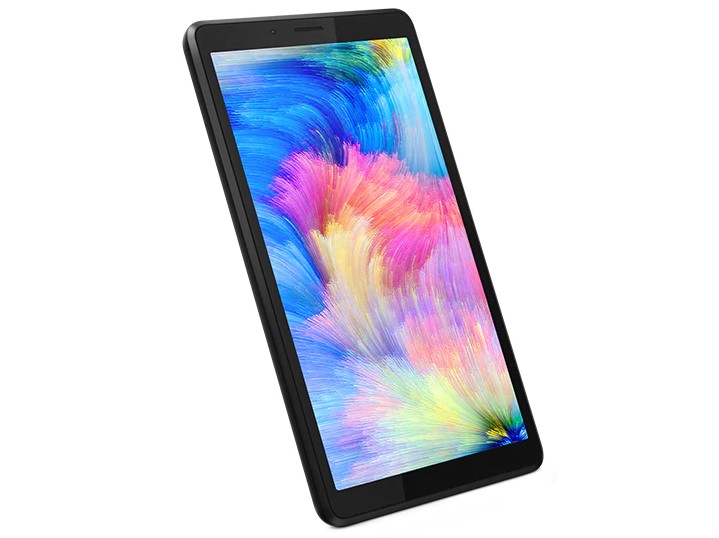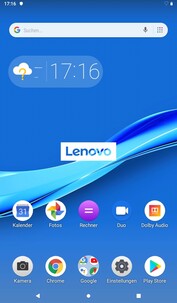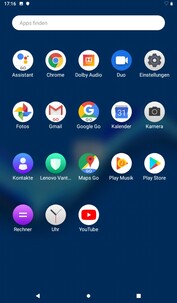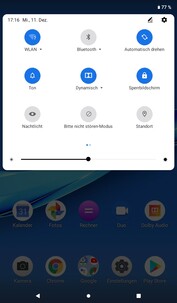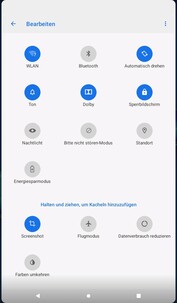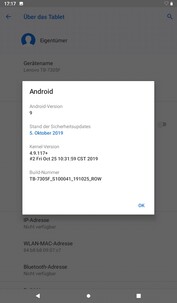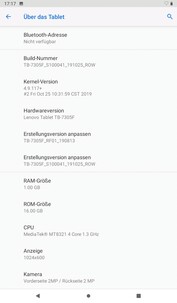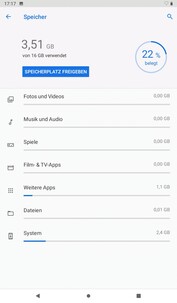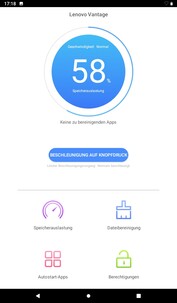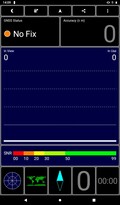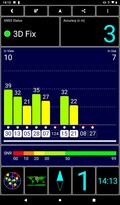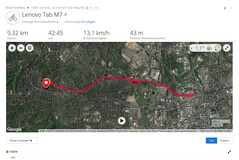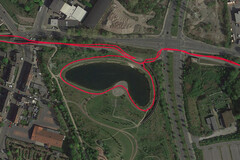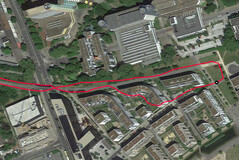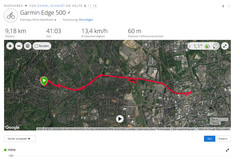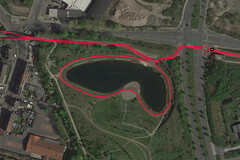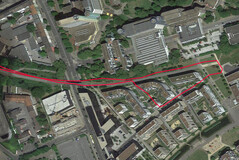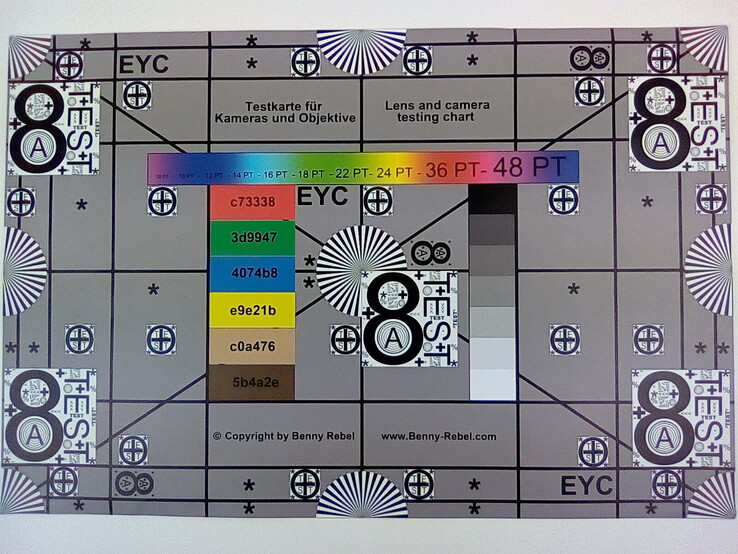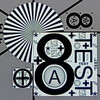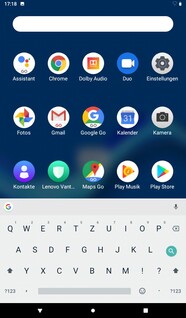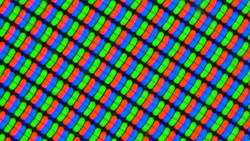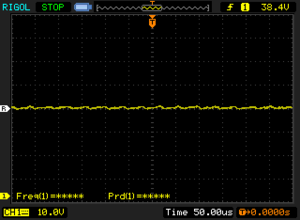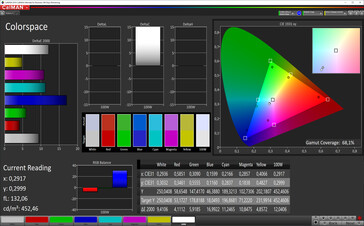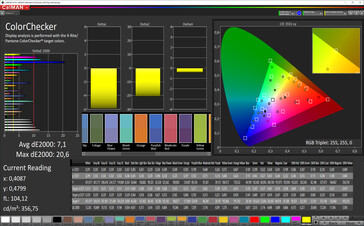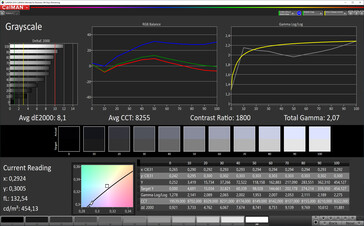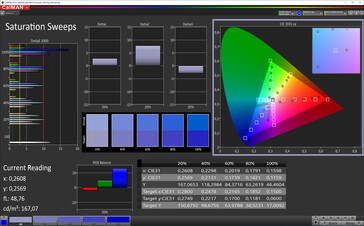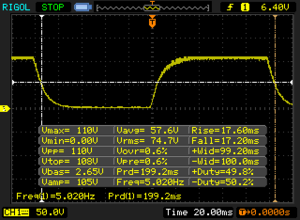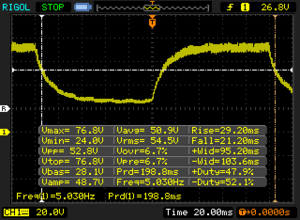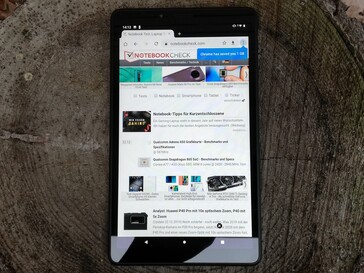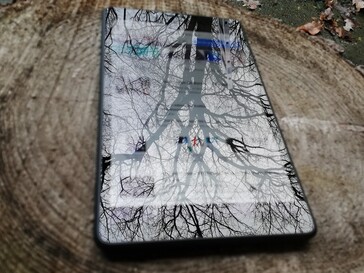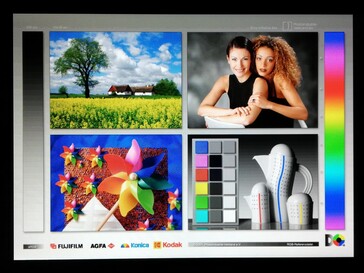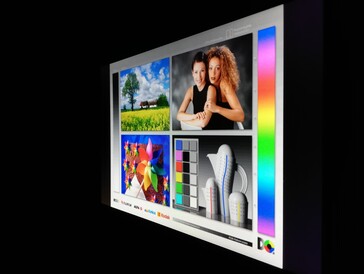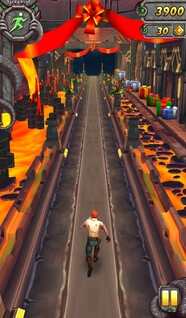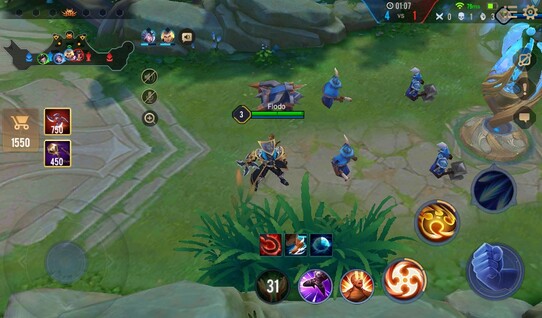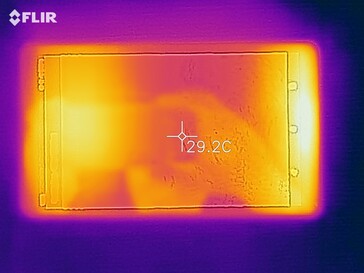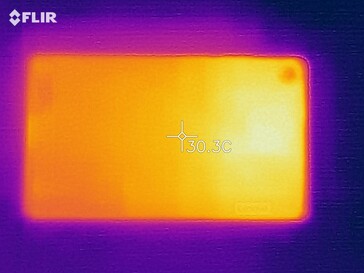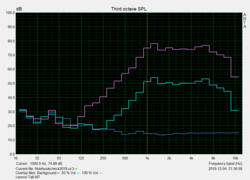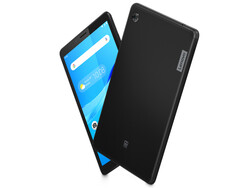Lenovo Tab M7 Tablet Review: The Kindle killer with Android Go
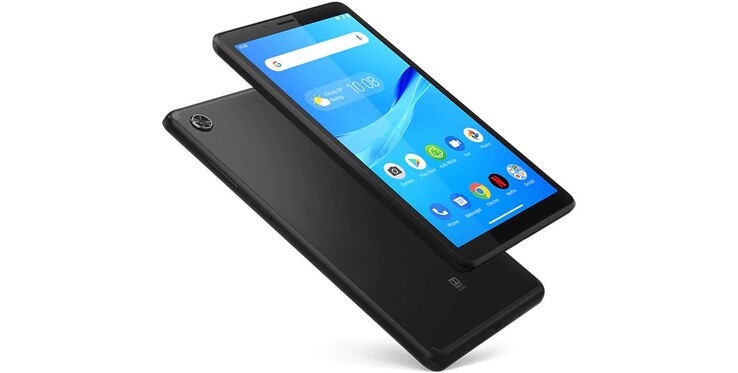
Lenovo is primarily known for its numerous notebooks. This year we reviewed two Lenovo tablets (Tab M10 and Tab P10). They had very good build quality but offered poor system performance. We do not expect the Tab M7 to have great system performance either, because it comes with Android Go and is primarily designed for simple applications
For only 79 Euros (~$88), buyers get a 7-inch tablet with MediaTek’s MT8321 SoC, an ARM Mali-400 MP2 GPU, 1 GB of RAM and 16 GB of internal eMMC flash storage. With this hardware configuration, the Lenovo tablet has to compete against other similarly priced slates. For this review, we selected a number of comparable devices from our database.
Rating | Date | Model | Weight | Height | Size | Resolution | Price |
|---|---|---|---|---|---|---|---|
| 75.4 % v7 (old) | 12 / 2019 | Lenovo Tab M7 MT8321, Mali-400 MP2 | 236 g | 8.2 mm | 7.00" | 1024x600 | |
| 77.7 % v6 (old) | 07 / 2019 | Amazon Fire 7 2019 MT8163 V/B 1.3 GHz, Mali-T720 MP2 | 286 g | 9.6 mm | 7.00" | 1024x600 | |
| 78.7 % v6 (old) | 03 / 2019 | Alldocube M8 T801 MT6797X, Mali-T880 MP4 | 345 g | 8.48 mm | 8.00" | 1920x1200 | |
| 83.3 % v7 (old) | 05 / 2018 | Huawei MediaPad M5 8.4 Kirin 960, Mali-G71 MP8 | 316 g | 7.3 mm | 8.40" | 2560x1600 | |
| 79.6 % v7 (old) | 01 / 2020 | Samsung Galaxy Tab A 8.0 2019 Wifi SM-T290 SD 429, Adreno 504 | 345 g | 8 mm | 8.00" | 1280x800 |
Case - Cheap tablet with small bezels
The Lenovo Tab M7 has a robust metal chassis and comes in three colour schemes. The build quality is very good and there are no defects. The buttons on the right side of the device sit firmly in their cutouts and the microSD card tray does not wobble in its slot. While the back is very susceptible to fingerprints, the front is dominated by the touchscreen. The bezels are not super-small, but they are smaller than those of the Amazon Fire 7. The weight, at 235 grams, is also lower.
Connectivity - Lenovo Tab M7 has a microSD card slot
The Lenovo Tab M7 comes with the low-priced MediaTek MT8321 chipset, an ARM Mali-400 MP2 graphics unit, 1 GB of RAM and 16 GB of eMMC memory. According to the specifications sheet, there is also a version with 2 GB of RAM and 32 GB of internal storage. In addition to a microUSB port and a 3.5-mm headphone jack, there is also a microSD card reader.
Software - Tablet from Lenovo with Android Go
The Lenovo Tab M7 runs the Go version of Android 9. The security patches were last updated on October 5, 2019. Thanks to Android Go, the system feels responsive even on low-spec hardware. There are no preinstalled third-party applications. While multi-tasking, you can run into occasional stutters. In this case, the Lenovo Vantage application can come in handy, because it allows users to free up RAM and close unused applications.
The Camera2 API is only supported in a “limited” fashion, and because there is no support for Widevine L1 DRM, it is impossible to stream Full HD content from Netflix, Amazon Prime or Maxdome.
Communication and GPS - Slow Wi-Fi on the Tab M7
The Tab M7 cannot operate in any mobile networks. The Lenovo tablet only supports the following IEEE 802.11 standards: b, g, and n. It also supports Bluetooth 4.2. With a 1x1 MIMO antenna, our review device achieves an upload speed of 48.2 Mb/s and a download speed of 59.7 Mb/s with our reference-grade router Linksys EA8500.
We use the GPS Test application to examine how well the Lenovo Tab M7 does when it comes to geolocation. The Lenovo tablet supports the following geolocation systems: GPS and SBAS. Outdoors, our review device has a margin of error of up to three metres. Indoors, the Tab M7 fails to connect to the satellites.
In order to determine how accurate our review device is when it comes to geolocation, we take it with us on a bike ride. On this bike ride we are also accompanied by the professional navigator Garmin Edge 500. The Tab M7 recorded the route that we took quite accurately. The tablet only had trouble keeping up with the Garmin Edge 500 at sharp turns, which is where the larger deviations come from.
Cameras - Not fit even for snapshots
The Lenovo Tab M7 features a 2 MP main camera and a 2 MP front-facing camera. Both cameras produce very poor shots. However, the front-facing camera produces somewhat duller colours than the rear camera. The panoramic shots appear blurry, and the finer structures are barely discernible. All in all, the images are very grainy. In the camera settings, users can adjust the ISO, white balance and the exposure. There is also the so-called “Scene mode”.
The main camera takes very blurry photos in low-light environments. Because the images are so grainy, the structures and details are hard to discern. Surfaces and objects in the background also look grainy. Under poor lighting conditions, the image quality becomes even worse. Objects are hard to recognise and the whole image is very noisy. There is also a “beauty mode”, which allows users to apply various colour filters.
The video shot with the main camera offers a similar level of quality as the photos. Motion appears somewhat blurry, but stabilisation works well when the camera is not shaking too much. Video can be recorded in either 480p or 720p. The Lenovo tablet does not offer a high frame-rate mode or anything like that.
We use the ColorChecker Passport tool to assess the colour accuracy of the Tab M7’s camera. Most of the colours appear too bright. Yellow tones are reproduced especially poorly. Under an illuminance level of 1 lux, our colour chart is no longer recognisable.
Under controlled lighting conditions, the Tab M7 takes better shots of our test chart. However, the images are still quite grainy. Fine details and structures are also recognisable, but the sharpness is lower at the edges of the image. Moreover, the bottom corners of the image appear washed-out. Under an illuminance level of 1 lux, our test chart is no longer recognisable.
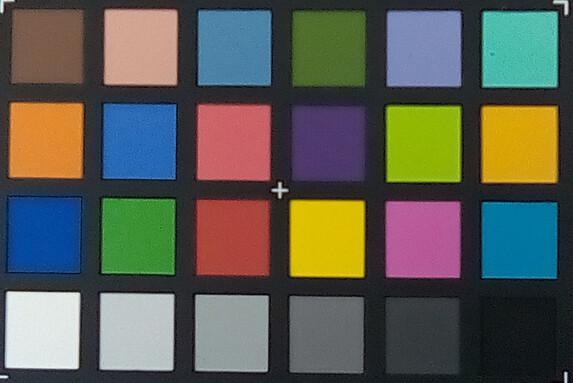

Accessories and Warranty - 24 months for Lenovo tablets
The box contains a USB charger with a microUSB cable and a SIM card removal tool. Lenovo does not offer any additional accessories for the Tab M7.
The Lenovo slate comes with a 24-month warranty.
Input Devices & Handling - Good touchscreen in the Tab M7
Google’s GBoard is used as the default virtual keyboard, which is why typing longer sentences in portrait mode is quite easy. The touchscreen is very responsive. When it comes to larger drag-and-drop gestures, the touchscreen puts up too much resistance. The motion sensor recognises when the device is rotated very fast.
You can use a PIN code, a pattern or face recognition to unlock the device. Face recognition works well under good lighting conditions.
Display - Lenovo Tab M7 offers a bright but reflective screen
The Lenovo Tab M7 comes with a 7-inch, IPS screen with a native resolution of 1024x600. The average brightness of 449 cd/m² is the highest in our comparison chart, whereas the brightness distribution of 86% is only mediocre. The brightness can be lowered to 4.52 cd/m². There is no ambient light sensor. In the APL50 test, the brightness peaks at 455 cd/m².
According to our measurements, Lenovo does not utilise PWM for brightness control.
| |||||||||||||||||||||||||
Brightness Distribution: 86 %
Center on Battery: 447 cd/m²
Contrast: 1788:1 (Black: 0.25 cd/m²)
ΔE ColorChecker Calman: 7.1 | ∀{0.5-29.43 Ø4.78}
ΔE Greyscale Calman: 8.1 | ∀{0.09-98 Ø5}
68.1% sRGB (Calman 2D)
Gamma: 2.07
CCT: 8255 K
| Lenovo Tab M7 IPS, 1024x600, 7" | Amazon Fire 7 2019 IPS, 1024x600, 7" | Alldocube M8 T801 IPS, 1920x1200, 8" | Huawei MediaPad M5 8.4 IPS, 2560x1600, 8.4" | Samsung Galaxy Tab A 8.0 2019 Wifi SM-T290 TFT, 1280x800, 8" | |
|---|---|---|---|---|---|
| Screen | 11% | -17% | -21% | 1% | |
| Brightness middle (cd/m²) | 447 | 391 -13% | 317.5 -29% | 405 -9% | 377 -16% |
| Brightness (cd/m²) | 449 | 385 -14% | 320 -29% | 392 -13% | 372 -17% |
| Brightness Distribution (%) | 86 | 75 -13% | 94 9% | 92 7% | 87 1% |
| Black Level * (cd/m²) | 0.25 | 0.15 40% | 0.5 -100% | 0.67 -168% | 0.29 -16% |
| Contrast (:1) | 1788 | 2607 46% | 635 -64% | 604 -66% | 1300 -27% |
| Colorchecker dE 2000 * | 7.1 | 6.3 11% | 6.12 14% | 5.78 19% | 6.1 14% |
| Colorchecker dE 2000 max. * | 20.6 | 19.3 6% | 13.72 33% | 9.82 52% | 10.9 47% |
| Greyscale dE 2000 * | 8.1 | 6.1 25% | 5.8 28% | 7.2 11% | 6.6 19% |
| Gamma | 2.07 106% | 2.22 99% | 2.12 104% | 2.278 97% | 2.13 103% |
| CCT | 8255 79% | 8069 81% | 7633 85% | 8405 77% | 7861 83% |
* ... smaller is better
Screen Flickering / PWM (Pulse-Width Modulation)
| Screen flickering / PWM not detected | |||
In comparison: 53 % of all tested devices do not use PWM to dim the display. If PWM was detected, an average of 8142 (minimum: 5 - maximum: 343500) Hz was measured. | |||
The Tab M7 has a very good contrast ratio and a somewhat elevated black value of 0.25 cd/m². This is why the Lenovo tablet takes second place in our comparison chart and is only beaten by the Amazon Fire 7. In the APL50 test, the black value (0.45 cd/m²) is much worse.
The CalMAN analysis reveals that the colours appear too cold. You can choose between three colour profiles (normal, warm, and cold) or you can use a slider to adjust the colours to your liking. The Night Light can be configured to turn on at a specific time, which makes the colours appear much warmer.
Display Response Times
| ↔ Response Time Black to White | ||
|---|---|---|
| 34.8 ms ... rise ↗ and fall ↘ combined | ↗ 17.6 ms rise | |
| ↘ 17.2 ms fall | ||
| The screen shows slow response rates in our tests and will be unsatisfactory for gamers. In comparison, all tested devices range from 0.1 (minimum) to 240 (maximum) ms. » 92 % of all devices are better. This means that the measured response time is worse than the average of all tested devices (20.2 ms). | ||
| ↔ Response Time 50% Grey to 80% Grey | ||
| 50.4 ms ... rise ↗ and fall ↘ combined | ↗ 29.2 ms rise | |
| ↘ 21.2 ms fall | ||
| The screen shows slow response rates in our tests and will be unsatisfactory for gamers. In comparison, all tested devices range from 0.165 (minimum) to 636 (maximum) ms. » 86 % of all devices are better. This means that the measured response time is worse than the average of all tested devices (31.7 ms). | ||
Performance - Only fit for simple applications
The Lenovo Tab M7 features the MediaTek MT8321, which is a very simple SoC. Due to 1 GB of RAM, the results in the benchmarks are not very good. The ARM Mali-400 MP2 graphics unit is only fit for non-demanding applications.
The Tab M7 does not do very well in the benchmarks. It takes last place in almost every category. Some benchmarks, such as PCMark 2.0, complete successfully but give out a score of 0 points. Especially demanding graphics benchmarks cannot be performed, because some graphics APIs are not supported.
| PCMark for Android | |
| Work performance score | |
| Huawei MediaPad M5 8.4 | |
| Samsung Galaxy Tab A 8.0 2019 Wifi SM-T290 | |
| Alldocube M8 T801 | |
| Amazon Fire 7 2019 | |
| Lenovo Tab M7 | |
| Average Mediatek MT8321 (2529 - 2719, n=2) | |
| Work 2.0 performance score | |
| Huawei MediaPad M5 8.4 | |
| Alldocube M8 T801 | |
| Samsung Galaxy Tab A 8.0 2019 Wifi SM-T290 | |
| Amazon Fire 7 2019 | |
| Lenovo Tab M7 | |
| Average Mediatek MT8321 (n=1) | |
| 3DMark | |
| 1280x720 offscreen Ice Storm Unlimited Score | |
| Alldocube M8 T801 | |
| Samsung Galaxy Tab A 8.0 2019 Wifi SM-T290 | |
| Amazon Fire 7 2019 | |
| Average Mediatek MT8321 (2902 - 2913, n=2) | |
| Lenovo Tab M7 | |
| 1280x720 offscreen Ice Storm Unlimited Graphics Score | |
| Alldocube M8 T801 | |
| Samsung Galaxy Tab A 8.0 2019 Wifi SM-T290 | |
| Amazon Fire 7 2019 | |
| Lenovo Tab M7 | |
| Average Mediatek MT8321 (2468 - 2468, n=2) | |
| 1280x720 offscreen Ice Storm Unlimited Physics | |
| Samsung Galaxy Tab A 8.0 2019 Wifi SM-T290 | |
| Amazon Fire 7 2019 | |
| Alldocube M8 T801 | |
| Average Mediatek MT8321 (7561 - 7924, n=2) | |
| Lenovo Tab M7 | |
| AnTuTu v7 - Total Score | |
| Huawei MediaPad M5 8.4 | |
| Alldocube M8 T801 | |
| Lenovo Tab M7 | |
| Average Mediatek MT8321 (20856 - 21974, n=2) | |
| Amazon Fire 7 2019 | |
In the browser benchmarks, the Tab M7 achieves only mediocre results. Scrolling on common websites is smooth. However, media content takes a while to load.
| JetStream 1.1 - Total Score | |
| Huawei MediaPad M5 8.4 (Chrome 66) | |
| Alldocube M8 T801 (Chrome 72.0.3626.105) | |
| Samsung Galaxy Tab A 8.0 2019 Wifi SM-T290 (Chrome 79) | |
| Amazon Fire 7 2019 (Silk Browser 70.3.1) | |
| Lenovo Tab M7 (Chrome 79) | |
| Average Mediatek MT8321 (10.9 - 11.2, n=2) | |
| WebXPRT 3 - Overall | |
| Average of class Tablet (39 - 480, n=25, last 2 years) | |
| Huawei MediaPad M5 8.4 (Chrome 66) | |
| Samsung Galaxy Tab A 8.0 2019 Wifi SM-T290 (Chrome 79) | |
| Amazon Fire 7 2019 | |
| Lenovo Tab M7 (Chrome 79) | |
| Average Mediatek MT8321 (n=1) | |
| Speedometer 2.0 - Result 2.0 | |
| Average of class Tablet (2.59 - 790, n=55, last 2 years) | |
| Samsung Galaxy Tab A 8.0 2019 Wifi SM-T290 (Chrome 79) | |
| Amazon Fire 7 2019 (Silk Browser 70.3.1) | |
| Lenovo Tab M7 (Chrome 79) | |
| Average Mediatek MT8321 (n=1) | |
| Octane V2 - Total Score | |
| Average of class Tablet (763 - 138481, n=95, last 2 years) | |
| Huawei MediaPad M5 8.4 (Chrome 66) | |
| Alldocube M8 T801 (Chrome 72.0.3626.105) | |
| Samsung Galaxy Tab A 8.0 2019 Wifi SM-T290 (Chrome 79) | |
| Amazon Fire 7 2019 (Silk Browser 70.3.1) | |
| Average Mediatek MT8321 (1712 - 1718, n=2) | |
| Lenovo Tab M7 (Chrome 79) | |
| Mozilla Kraken 1.1 - Total | |
| Lenovo Tab M7 (Chrome 79) | |
| Average Mediatek MT8321 (19085 - 19212, n=2) | |
| Amazon Fire 7 2019 (Silk Browser 70.3.1) | |
| Samsung Galaxy Tab A 8.0 2019 Wifi SM-T290 (Chrome 79) | |
| Alldocube M8 T801 (Chrome 72.0.3626.105) | |
| Huawei MediaPad M5 8.4 (Chrome 66) | |
| Average of class Tablet (243 - 27101, n=80, last 2 years) | |
* ... smaller is better
Our review device has 16 GB of eMMC flash storage. It achieves slightly worse read and write speeds than most other devices with 16 GB of eMMC memory.
The SD card reader of the Lenovo Tab M7 delivers very poor write and read rates with our reference-grade SD card Toshiba Exceria Pro M501 and therefore performs worse than all devices that we included in this review.
| Lenovo Tab M7 | Amazon Fire 7 2019 | Alldocube M8 T801 | Huawei MediaPad M5 8.4 | Samsung Galaxy Tab A 8.0 2019 Wifi SM-T290 | Average 16 GB eMMC Flash | Average of class Tablet | |
|---|---|---|---|---|---|---|---|
| AndroBench 3-5 | 4% | 8% | 164% | 90% | -2% | 1572% | |
| Sequential Read 256KB (MB/s) | 155.7 | 164.9 6% | 142.8 -8% | 268.6 73% | 291.9 87% | 164.5 ? 6% | 1761 ? 1031% |
| Sequential Write 256KB (MB/s) | 53.1 | 77.3 46% | 103 94% | 132.2 149% | 108.5 104% | 43 ? -19% | 1309 ? 2365% |
| Random Read 4KB (MB/s) | 31.39 | 24.98 -20% | 19.5 -38% | 62.8 100% | 57.8 84% | 21.7 ? -31% | 243 ? 674% |
| Random Write 4KB (MB/s) | 11.96 | 5.83 -51% | 10.01 -16% | 65.1 444% | 16.89 41% | 8.08 ? -32% | 277 ? 2216% |
| Sequential Read 256KB SDCard (MB/s) | 38.97 ? | 59.2 ? 52% | 84.9 ? 118% | 87.1 ? 124% | 59.1 ? 52% | ||
| Sequential Write 256KB SDCard (MB/s) | 35.21 ? | 32.05 ? -9% | 70.7 ? 101% | 69.9 ? 99% | 39.8 ? 13% |
Gaming - Casual games are playable
The ARM Mali-400 MP2 is ill-suited for gaming. Casual games work fine, but more-demanding titles are plagued by stuttering. Some games do not work at all, because not all graphics APIs are supported.
In Arena of Valor, the menu felt very laggy and the game itself did not run smoothly. Asphalt 9: Legends crashed as soon as we launched it. Simpler games such as Temple Run 2 ran smoothly.
Emissions - Lenovo Tab M7 does not get hot
Temperature
According to our measurements, the surface temperatures of the Lenovo Tab M7 reach up to 30.9 °C when idle and 31.2 °C under load. The tablet never feels hot to the touch.
(+) The maximum temperature on the upper side is 31.2 °C / 88 F, compared to the average of 33.7 °C / 93 F, ranging from 20.7 to 53.2 °C for the class Tablet.
(+) The bottom heats up to a maximum of 27.5 °C / 82 F, compared to the average of 33.2 °C / 92 F
(+) In idle usage, the average temperature for the upper side is 26.4 °C / 80 F, compared to the device average of 30 °C / 86 F.
Speakers
Lenovo Tab M7 audio analysis
(+) | speakers can play relatively loud (86.1 dB)
Bass 100 - 315 Hz
(-) | nearly no bass - on average 34.4% lower than median
(±) | linearity of bass is average (8.6% delta to prev. frequency)
Mids 400 - 2000 Hz
(±) | reduced mids - on average 8% lower than median
(±) | linearity of mids is average (8.9% delta to prev. frequency)
Highs 2 - 16 kHz
(±) | higher highs - on average 5.4% higher than median
(+) | highs are linear (3% delta to prev. frequency)
Overall 100 - 16.000 Hz
(±) | linearity of overall sound is average (25.8% difference to median)
Compared to same class
» 81% of all tested devices in this class were better, 2% similar, 16% worse
» The best had a delta of 7%, average was 21%, worst was 129%
Compared to all devices tested
» 78% of all tested devices were better, 4% similar, 17% worse
» The best had a delta of 4%, average was 24%, worst was 134%
Amazon Fire 7 2019 audio analysis
(±) | speaker loudness is average but good (81.9 dB)
Bass 100 - 315 Hz
(-) | nearly no bass - on average 35% lower than median
(±) | linearity of bass is average (8% delta to prev. frequency)
Mids 400 - 2000 Hz
(±) | reduced mids - on average 5.6% lower than median
(±) | linearity of mids is average (7.4% delta to prev. frequency)
Highs 2 - 16 kHz
(+) | balanced highs - only 1.8% away from median
(+) | highs are linear (2.5% delta to prev. frequency)
Overall 100 - 16.000 Hz
(±) | linearity of overall sound is average (23.9% difference to median)
Compared to same class
» 74% of all tested devices in this class were better, 6% similar, 20% worse
» The best had a delta of 7%, average was 21%, worst was 129%
Compared to all devices tested
» 71% of all tested devices were better, 7% similar, 23% worse
» The best had a delta of 4%, average was 24%, worst was 134%
Energy Management - Battery life could be better
Energy Consumption
The Lenovo Tab M7 draws at least 0.85 watts when idle and up to 3.69 watts under load. These results are the lowest in our comparison chart. The Lenovo tablet comes with a 5-watt charger.
| Off / Standby | |
| Idle | |
| Load |
|
Key:
min: | |
| Lenovo Tab M7 3500 mAh | Amazon Fire 7 2019 2980 mAh | Alldocube M8 T801 5500 mAh | Huawei MediaPad M5 8.4 5100 mAh | Samsung Galaxy Tab A 8.0 2019 Wifi SM-T290 5100 mAh | |
|---|---|---|---|---|---|
| Power Consumption | -31% | -167% | -106% | -4% | |
| Idle Minimum * (Watt) | 0.85 | 1.1 -29% | 3.4 -300% | 2.1 -147% | 0.62 27% |
| Idle Average * (Watt) | 2.4 | 2.77 -15% | 5.1 -113% | 3.74 -56% | 2.68 -12% |
| Idle Maximum * (Watt) | 2.42 | 2.79 -15% | 5.3 -119% | 4.33 -79% | 2.7 -12% |
| Load Average * (Watt) | 3.17 | 4.5 -42% | 6 -89% | 6.32 -99% | 3.61 -14% |
| Load Maximum * (Watt) | 3.69 | 5.61 -52% | 11.5 -212% | 9.13 -147% | 4 -8% |
* ... smaller is better
Battery Life
In our practically oriented Wi-Fi test, the Tab M7 had a battery runtime of 6 h 42 m, which means that the Amazon Fire 7 lasted longer in this test, even though it has a smaller battery. Other tablets, such as the Alldocube M8, managed to outlast the Tab M7 only by a very small margin, despite the fact that they have much bigger batteries.
The Lenovo tablet does not come with a fast-charger, which is why it takes about 4 h 30 m to fully charge.
| Lenovo Tab M7 3500 mAh | Amazon Fire 7 2019 2980 mAh | Alldocube M8 T801 5500 mAh | Huawei MediaPad M5 8.4 5100 mAh | Samsung Galaxy Tab A 8.0 2019 Wifi SM-T290 5100 mAh | |
|---|---|---|---|---|---|
| Battery runtime | |||||
| WiFi v1.3 (h) | 6.7 | 7.7 15% | 7 4% | 10.5 57% | 13.9 107% |
Pros
Cons
Verdict - Good tablet for simple applications
The Lenovo Tab M7 is no powerhouse. The benchmark results are not very good, and the Wi-Fi as well as the storage could have been faster. When it comes to battery life, a device with such a low power draw could have squeezed more out of its 3500-mAh battery.
The Lenovo Tab M7 is an option for anyone who is looking for a simple tablet with a stock Android experience.
At the end of the day, we are very fond of the Tab M7. The build quality is solid, and unlike the Fire 7 from Amazon it does not come with thick, annoying screen bezels. For only 79 Euros (~$88), the stock version of Android Go is a very good alternative to Amazon’s Fire OS, which features many proprietary Amazon applications. Those who are looking for a cheap and small tablet, which will be used primarily for surfing the Internet and occasionally watching videos, the Lenovo Tab M7 represents a comparatively high-quality device with a very reasonable price tag.
Lenovo Tab M7
- 12/27/2019 v7 (old)
Mike Wobker




